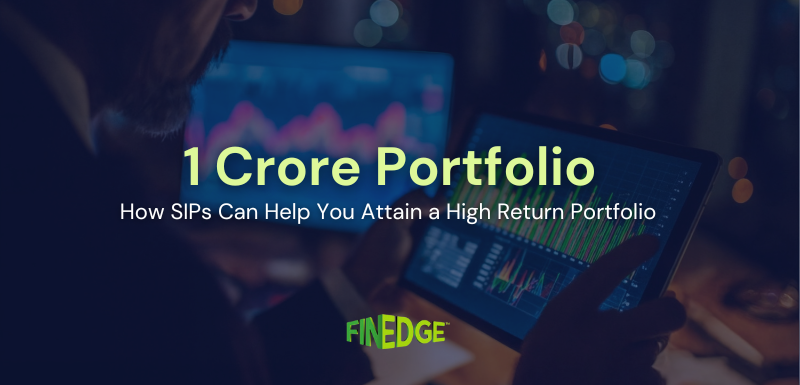What is Rupee Cost Averaging? (With Example)
- Rupee cost averaging means investing a fixed sum at regular intervals, usually through SIPs.
- It helps reduce the average cost of mutual fund units over time.
- A SIP strategy works well in volatile markets, buying more units when NAVs fall and fewer when NAVs rise.
- Compared to lump sum investing, SIPs can accumulate more units during downturns, enhancing long-term returns.
Rupee cost averaging turns market volatility into your ally. By investing a fixed amount regularly through SIPs, you reduce timing risks, lower average costs, and build long-term wealth with discipline and consistency.
A common question for investors is: what is rupee cost averaging, and why is it important for mutual funds? In simple terms, rupee cost averaging is a disciplined investment approach where you invest a fixed amount regularly, usually through a Systematic Investment Plan (SIP). Instead of trying to time the market, you spread your investments across different market conditions. Over time, this strategy averages out the purchase cost of your units and reduces the risk of entering at the wrong time.
Rupee Cost Averaging Meaning
The meaning of rupee cost averaging is straightforward: consistency. By investing the same sum each month, you avoid emotional decisions and market timing mistakes. When NAVs are low, your money buys more units; when NAVs are high, you buy fewer. The outcome is a lower average cost per unit compared to investing a lump sum without knowing how the market will behave.
Why is Rupee Cost Averaging Important?
Equity markets are unpredictable. Many investors react emotionally, buying aggressively during market highs and selling during dips. This behavior often damages long-term wealth creation. Rupee cost averaging provides a counterbalance by:
-
Encouraging discipline with regular contributions.
-
Eliminating timing risk, since you invest in all market conditions.
-
Reducing the average purchase cost of units.
-
Supporting long-term goals like retirement, education, or wealth creation.
How Rupee Cost Averaging Works in SIP (With Example)
A Systematic Investment Plan (SIP) is the most practical way to use rupee cost averaging in mutual funds. You invest a fixed amount (say ₹10,000) every month, no matter where the market stands.
Here’s a 12-month example:
|
Month |
NAV (₹) |
Units Bought |
|
Jan |
55 |
181.81 |
|
Feb |
52 |
192.30 |
|
Mar |
50 |
200.00 |
|
Apr |
54 |
185.18 |
|
May |
54 |
185.18 |
|
Jun |
55 |
181.81 |
|
Jul |
49 |
204.08 |
|
Aug |
48 |
208.33 |
|
Sep |
51 |
196.07 |
|
Oct |
57 |
175.43 |
|
Nov |
56 |
178.57 |
|
Dec |
56 |
178.57 |
Total Investment: ₹1,20,000
Units Accumulated with SIP: ~2,267.3
Units with Lump Sum (at Jan NAV of ₹55): ~2,181.8
The SIP strategy gave the investor nearly 86 extra units compared to a lump sum investment in January. When NAVs rise again, these additional units translate into higher overall returns. This is how rupee cost averaging in SIP works to your advantage, by turning market volatility into an opportunity.
Benefits of Rupee Cost Averaging
The benefits of rupee cost averaging go beyond numbers:
-
Reduces guesswork: You don’t need to predict the right time to invest.
-
Promotes discipline: Automatic SIPs build a consistent habit.
-
Manages volatility: Market ups and downs work in your favor.
-
Supports compounding: Steady contributions grow meaningfully over time.
-
Easy to adopt: Suitable for both beginners and seasoned investors.
Final Thoughts
Rupee cost averaging is about long-term investing discipline rather than short-term profits. By staying consistent through SIPs, you smooth out market volatility, reduce timing risks, and let time and compounding work in your favor. For Indian investors focused on financial goals, it remains one of the simplest and most effective mutual fund strategies.
FAQs
Your Investing Experts
Continue Reading
Cost of Delay in Investment: Why Starting Early Matters
Many investors assume that postponing their SIP temporarily has a minor impact. In reality, the true loss comes from the compounding opportunity that disappears with every missed month. A consistent approach is far more powerful than trying to compensate later by investing larger amounts.
How to Build a ₹1 Crore Portfolio: A Practical Guide for Indian Investors
Reaching ₹1 crore isn’t about luck or timing, it’s about discipline, consistency, and the patience to let compounding work in your favor.
Are Mutual Fund SIP Investments Low Risk?
Many first-time investors believe that SIPs are a low-risk way to enter the market. But is that really true? The idea that SIPs offer guaranteed safety can be misleading, especially if the underlying fund is equity-oriented. This blog breaks down the real risk profile of SIPs and helps you understand how they work in volatile markets.

.png)


.jpg)